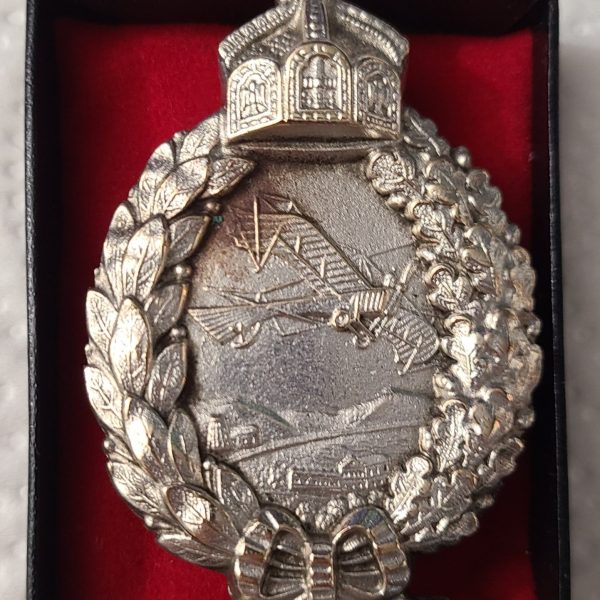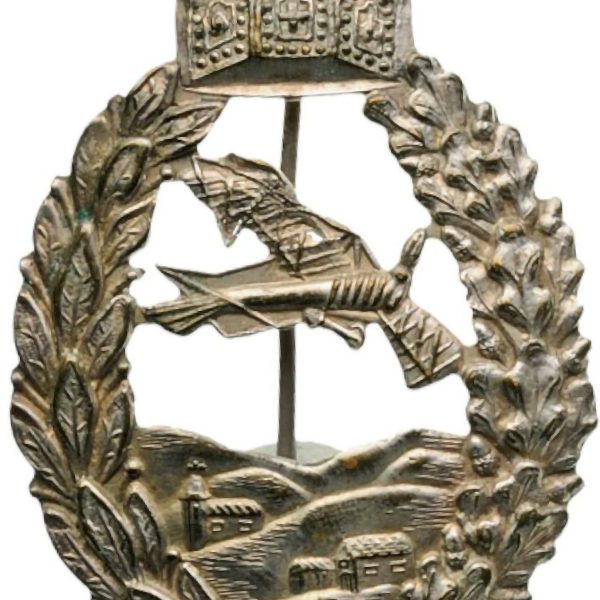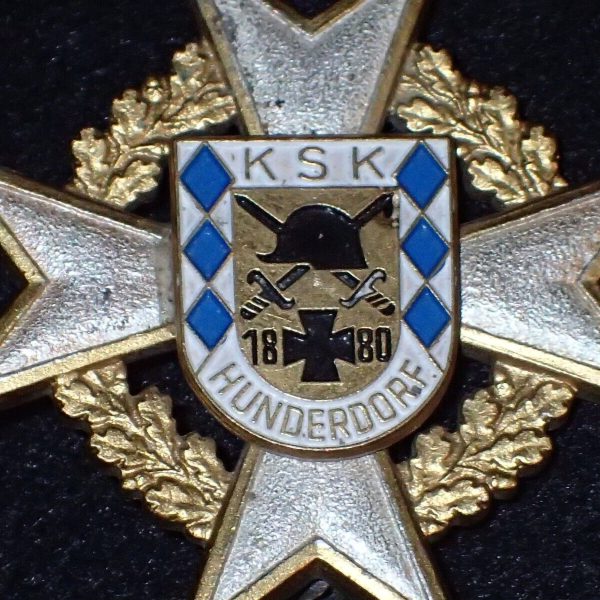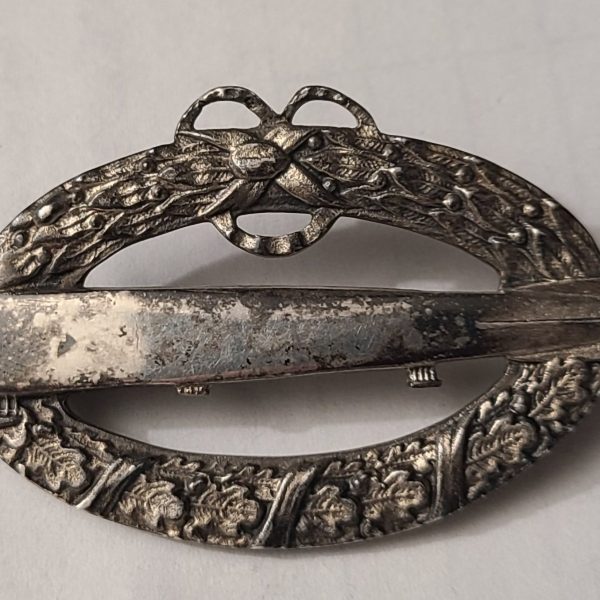Weight: 31.38Grams
Height: 69mm
Width: 43mm
This badge is well marked with “C.E. Junker Berlin” with the crescent moon which means it has silver content. The detail is very good but the alloy strike has some pitting in the background sky. (This is NOT a casting bubble) The badge has been put on an XRF analyzer and has been tested to be 50% silver – 50% other metals. I think there is a repair to reattach the catch. in the close-up of the catch, you can see file marks underneath the solder. I suspect the old solder was filed down and catch re-soldered, also here’s an observation I made, every copy currently on the market, on eBay or off Google, does not have the same hinge/pin as this one. this is an imperial Germany-type hinge/pin, 1900s to 1930s

-

-

-

-
World War 2 was one of the most significant conflicts in modern history. Millions of soldiers and civilians died in the fierce battles between the Allies and the Axis.
Tales of courage and sacrifices still live in the military artifacts that remain in our grandparents’ attics, basements, and footlockers. Iron Cross HQ is very proud to offer a wide selection of WWII uniforms, WWII field gear, weapons, medals, decorations, photos, and more, for sale at Iron Cross HQ Store. Reproduction items and originals are available for Militaria collectors and reenactors.
Iron Cross HQ, as the seller of War memorabilia, would like to emphasize that these items are sold as historical artifacts and collectibles, and not intended to promote or glorify war, violence, or any extremist ideology. We do not condone the actions of any individual or group involved in these conflicts and sell these items solely for their historical significance.